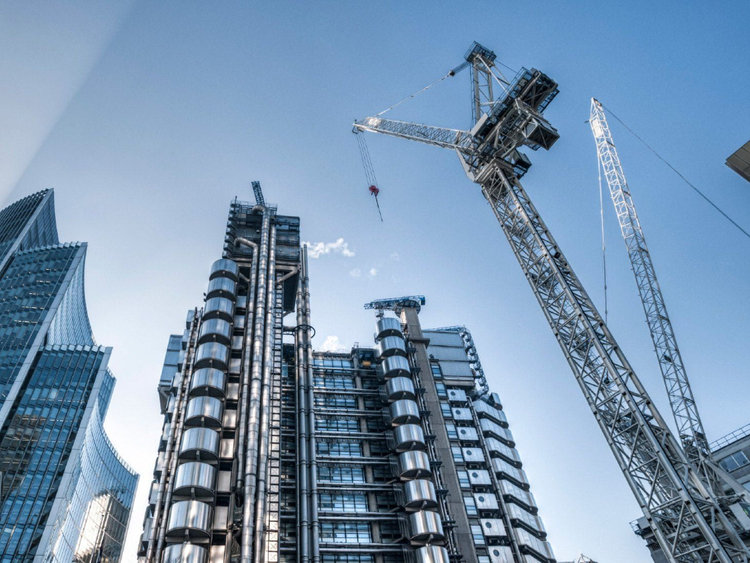Step into the future of construction, where innovation and sustainability converge to reshape the way we build. Imagine structures that not only stand as marvels of architectural prowess but also breathe in harmony with the environment. In this exploration of green technology in construction, let us uncover a world where energy-efficient designs, smart materials, and renewable energy sources seamlessly blend with age-old wisdom.
Discover the secrets behind green roofs that not only shield buildings but also nurture life, and witness the transformative power of Building Information Modeling (BIM) in revolutionizing construction processes. As we embark on a journey through the realms of sustainable construction, be prepared to envision a future where buildings not only rise to new heights but also stand as beacons of ecological responsibility. Welcome to the era of construction where every brick tells a story of innovation and sustainability.

Energy-Efficient Design:
In pursuit of sustainable construction, energy-efficient design principles take center stage. The strategic placement of windows and skylights allows for optimal natural lighting, minimizing the need for artificial sources. Incorporating passive design elements, such as proper insulation and ventilation, reduces reliance on external heating and cooling systems, thereby enhancing overall energy efficiency.
Smart Materials:
Sustainable construction embraces materials that are both environmentally friendly and durable. Bamboo, known for its rapid growth and versatility, has gained popularity as a viable alternative to traditional building materials. Additionally, recycled steel minimizes the environmental impact of construction. The integration of smart materials with self-healing capabilities not only enhances structural resilience but also reduces the frequency of repairs, contributing to long-term sustainability.
Green Roofs and Walls:
The concept of green roofs and walls is gaining traction as a multifaceted solution. Acting as natural insulation, these features regulate indoor temperatures, leading to decreased reliance on heating and cooling systems. Moreover, they play a crucial role in stormwater management, reducing the risk of urban flooding. This dual functionality makes green roofs and walls a pivotal element in sustainable construction practices.
Renewable Energy Integration:
A significant stride in sustainable construction involves the integration of renewable energy sources. Solar panels and wind turbines, when strategically incorporated, provide an on-site renewable energy supply. Hybrid systems that combine various renewable sources offer a reliable and consistent power supply, reducing dependence on traditional energy grids.
Water Conservation Strategies:
Efficient water management is integral to sustainable construction. Rainwater harvesting systems help reduce reliance on conventional water sources, promoting self-sufficiency. Water-efficient fixtures and recycling systems further contribute to sustainable water usage, aligning with the overarching goal of minimizing environmental impact.

Waste Reduction and Recycling:
Minimizing construction waste is a pivotal aspect of sustainable construction. By implementing efficient planning and recycling practices, builders can significantly reduce the environmental footprint of construction projects. Repurposing materials from demolished structures further diminishes the demand for new resources, fostering a circular economy within the construction industry.
Building Information Modeling (BIM):
Building Information Modeling (BIM) technology plays a crucial role in optimizing construction processes. By providing a comprehensive digital representation of the building, BIM facilitates accurate planning and reduces resource wastage. Real-time collaboration among project stakeholders ensures streamlined decision-making, enhancing overall efficiency.
IoT and Building Automation:
The integration of Internet of Things (IoT) devices and building automation systems represents a leap forward in sustainable construction. Smart building management, including automated control of lighting, heating, and cooling based on occupancy and usage patterns, optimizes energy consumption. This not only enhances efficiency but also aligns with the principles of sustainability.
Certifications and Standards:
Adherence to green building certifications, such as LEED (Leadership in Energy and Environmental Design), has become a hallmark of sustainable construction. These certifications ensure compliance with stringent sustainability standards, enhancing the market value of structures. Investors and tenants increasingly seek such certifications, contributing to the demand for environmentally conscious construction projects.
Community Engagement and Education:
Sustainable construction goes beyond the physical structures; it involves community engagement and education. Involving local communities in construction projects fosters a sense of ownership and connection. Educational programs on green building practices create awareness and cultivate a culture of sustainability, laying the groundwork for a broader societal shift towards eco-conscious living.

Innovative Construction Techniques:
The adoption of innovative construction techniques is paramount in sustainable practices. Techniques like modular construction, which involves assembling pre-fabricated components off-site, minimize construction waste and reduce the environmental impact associated with traditional building methods. This approach not only accelerates construction timelines but also contributes to a more sustainable and resource-efficient industry.
Life Cycle Assessment (LCA):
A holistic approach to sustainability involves considering the entire life cycle of a building. Life Cycle Assessment (LCA) evaluates the environmental impact of a structure from its inception to its eventual demolition. This comprehensive analysis allows builders to make informed decisions, optimizing the environmental performance of buildings over their entire life span.
Adaptive Reuse and Retrofitting:
Sustainable construction extends beyond new builds; it encompasses the adaptive reuse and retrofitting of existing structures. Breathing new life into older buildings reduces the need for demolition and new construction, preserving resources. Retrofitting with energy-efficient systems and sustainable materials enhances the longevity and environmental performance of existing structures.
Green Transportation Infrastructure:
Sustainability in construction goes hand in hand with eco-friendly transportation infrastructure. Building projects that prioritize accessibility for pedestrians, cyclists, and public transportation contribute to reduced carbon emissions. Integrating green transportation elements into construction plans fosters environmentally conscious urban development.
Local Sourcing and Indigenous Materials:
Reducing the carbon footprint associated with material transportation is a key consideration in sustainable construction. Opting for locally sourced materials and utilizing indigenous resources not only supports local economies but also minimizes the environmental impact of transportation. This approach aligns with the broader goal of creating sustainable and resilient communities.
Conclusion
The landscape of sustainable construction is continually evolving, encompassing a diverse array of practices and technologies. From innovative construction techniques to the revitalization of existing structures, each facet contributes to the overarching goal of creating a built environment that harmonizes with nature.
As the construction industry embraces these principles, it becomes a catalyst for positive change, shaping a future where buildings are not just structures but integral components of a sustainable and thriving ecosystem.
